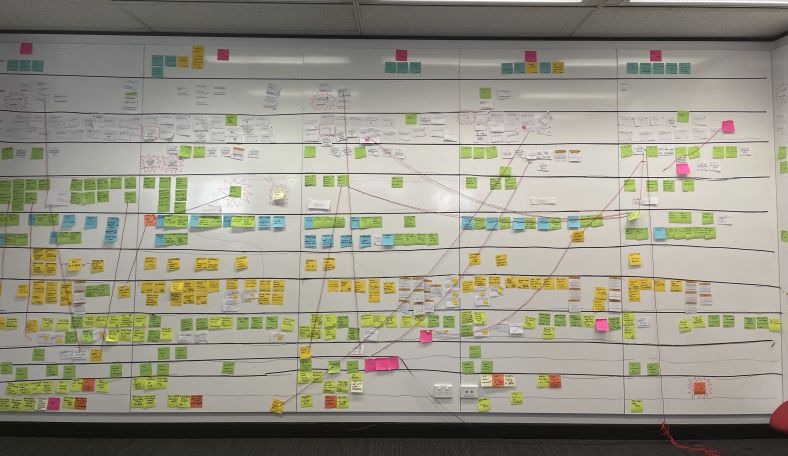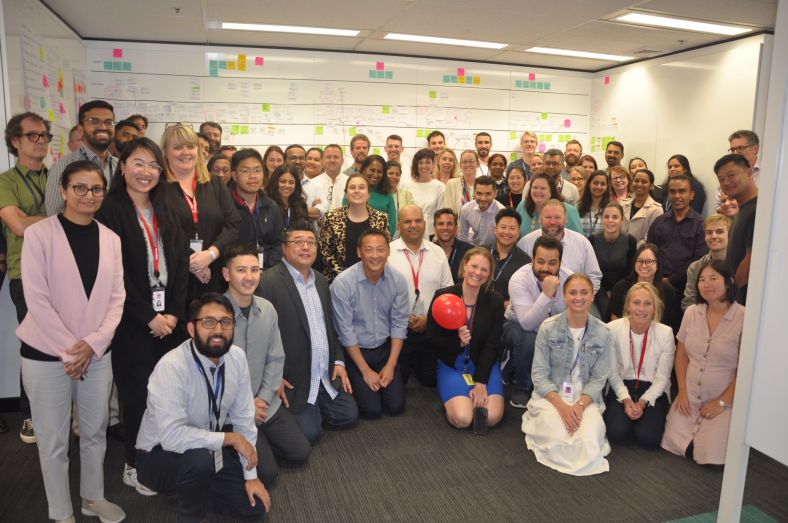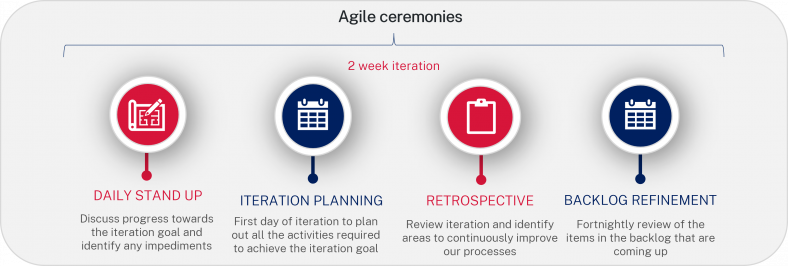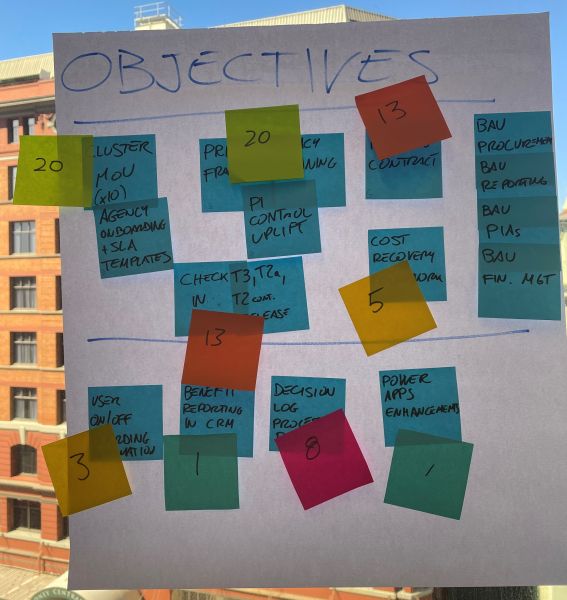The OneCX program is transforming the digital customer experience, by building nsw.gov.au as the single source of truth for the NSW Government. With a scope of over 450 agency websites to be migrated, finding an efficient and streamlined way of working is pivotal to the program’s success.
The OneCX program team works with agencies across government to migrate website content based on customer needs, rather than government structures. Our delivery teams have long been advocates for Agile ways of working, using an agile development approach to iteratively deliver customer value.
Working agile in terms of project management, is to breakdown our deliverables into smaller parts. This helps to concentrate our efforts on pre-defined segments of the overall project. It also allows us to quickly adjust and change direction if needed, without throwing the entire project off course.
Our program spans across all-of-government and can be complex in delivery. With 34 websites delivered to date across 6 clusters, we are continuously learning and iteratively improving our processes. In May 2022, we transitioned to the Scaled Agile Framework (SAFe), a methodology for planning and delivering to a set of values, where resources are lean and the scope is large. The framework is designed to improve visibility, alignment and collaboration, leading to greater productivity, better results and faster delivery.

Objectives and benefits of using SAFe
- SAFe helps us to align and plan effectively at the OneCX program level, instead of a stream or website level, helping us to better allocate resources and keep our stakeholders informed.
- SAFe brings together our delivery teams and enablers (support teams), such as technology and operations, change management, and customer experience teams, who are pivotal to the success of nsw.gov.au.
- We have greater quality benchmarks, awareness and understanding of dependencies, and can identify risks earlier.
- Stakeholders are involved in planning, ensuring transparency and better understanding of the OneCX program benefits, including change management support and digital capability uplift for their teams.

How does SAFe work in practice?
Program Increments
Our project planning is broken down into Program Increments (PI). Each increment generally runs for 12 weeks, so we complete four each year.
At the start of each PI, all delivery and enabler teams come together in-person for PI planning - a two-day, face-to-face activity to plan out the current increment of work. The aim of PI planning is for each squad to commit to several defined objectives. It also helps to identify and mitigate any risks. These groups or teams make up the Agile Release Train (ART) and are responsible for delivering the objectives set out in each PI.
Delivery is prioritised based on a business value that is assigned by the executive team. A successful PI planning event delivers a set of committed PI objectives and a program board that shows feature delivery dates, dependencies and relevant milestones.
"For the enabler teams, PI Planning has improved our visibility of what the delivery teams are working on, when their projects will be delivered to BAU, and how we can assist with input across content, analytics, UX, search and personalisation.
The PI process has improved the engagement between the delivery teams and enabler teams, resulting in better products and a streamlined handover process."
Chris Wang, Senior Manager, Content
Iterations
Each PI is broken down further into two-week sprints, also known as iterations. Each is numbered to easily reference throughout each increment.

Each iteration follows a set of ceremonies or meetings, to foster greater communication and collaboration, and to ensure delivery stays on track. These include:
- Scrum of scrums: delivery teams discuss risks to and help coordinate the dependencies between the teams on the ART and provide visibility into progress and impediments.
- Product sync: a forum to discuss the progress in meeting the PI objectives and make any adjustments to scope, if required.
- ART demonstration: showcase of the work that was completed after each iteration. The goal of the review is to share information about what other teams are working on, elicit feedback and answer questions relating to what was finished during the iteration.
Ceremonies at squad (delivery team) level:
- Daily stand up: a brief, 15 minute daily team meeting for coordination and alignment. Each team member addresses three questions in their update:
- What did you work on yesterday?
- What are you working on today?
- What, if anything, is impeding or blocking your progress?
- Iteration planning: this session is to plan the current iteration’s work. The team will discuss and document the steps required and add an estimation of the complexity and effort involved.
- Retrospective: scheduled at the end of each iteration, it is a time for the team to reflect. The focus is on identifying areas that need improvement and determine steps to do so in the next iteration. The goal is to continuously fine-tune the way the team works together.
- Backlog refinement: ensures that the tasks on the backlog are prioritised. The refinement can include splitting a task to make it more manageable, assigning correct estimates to ensure delivery remains on track, or moving them into the next iteration.

"For the platform team, SAFe and the PI process are very helpful to stay in sync with the other enabler and delivery teams during the whole increment.
PI planning days have improved our visibility of what’s in preparation in other squads, which is also useful further down the track for BAU activities."Landry Meunier, Service Delivery Manager
Stakeholder involvement
Stakeholders are an important part of any project. If the agency or group you’re working with are aligned with the overall strategy and direction, inviting stakeholders to join the PI planning can be a quality engagement opportunity. Being involved from ground zero and seeing the planning come to life can be empowering and be beneficial to the overall delivery of the project. Having real-time access to agency knowledge and priorities can also help deliver a better plan.
"From a stakeholder perspective, I found being included in the PI planning days was incredibly valuable. It was obviously an opportunity go get to know the team but more importantly it helped me better understand the process, when and how our we would work together in the coming months and helped both sides better understand the challenges and potential risks the other might experience so we could find work-arounds."
Kate Hennessy, Online Communications Manager, Western Local Health District

Progress so far
The OneCX program are currently progressing through the third planning increment. It has already delivered greater collaboration across the teams and improved the utilisation and planning of key resources. It has also given the entire team confidence to raise potential risks and create better visibility with our leadership teams. With each increment we complete, we take on more learnings and ways of working for continual improvement.
Stay in touch
Want to know more about the OneCX program? Subscribe to our newsletter for the latest news and updates.